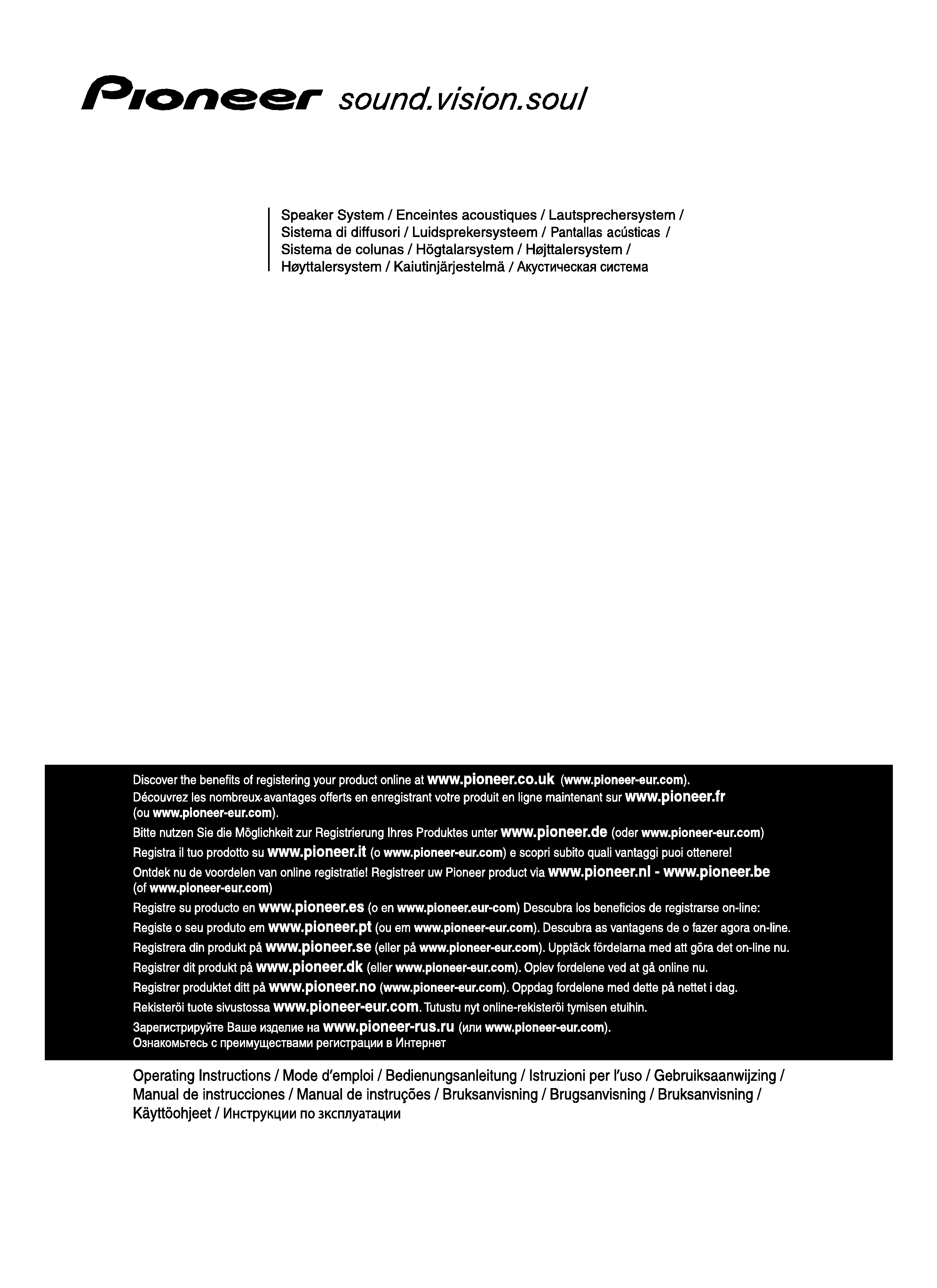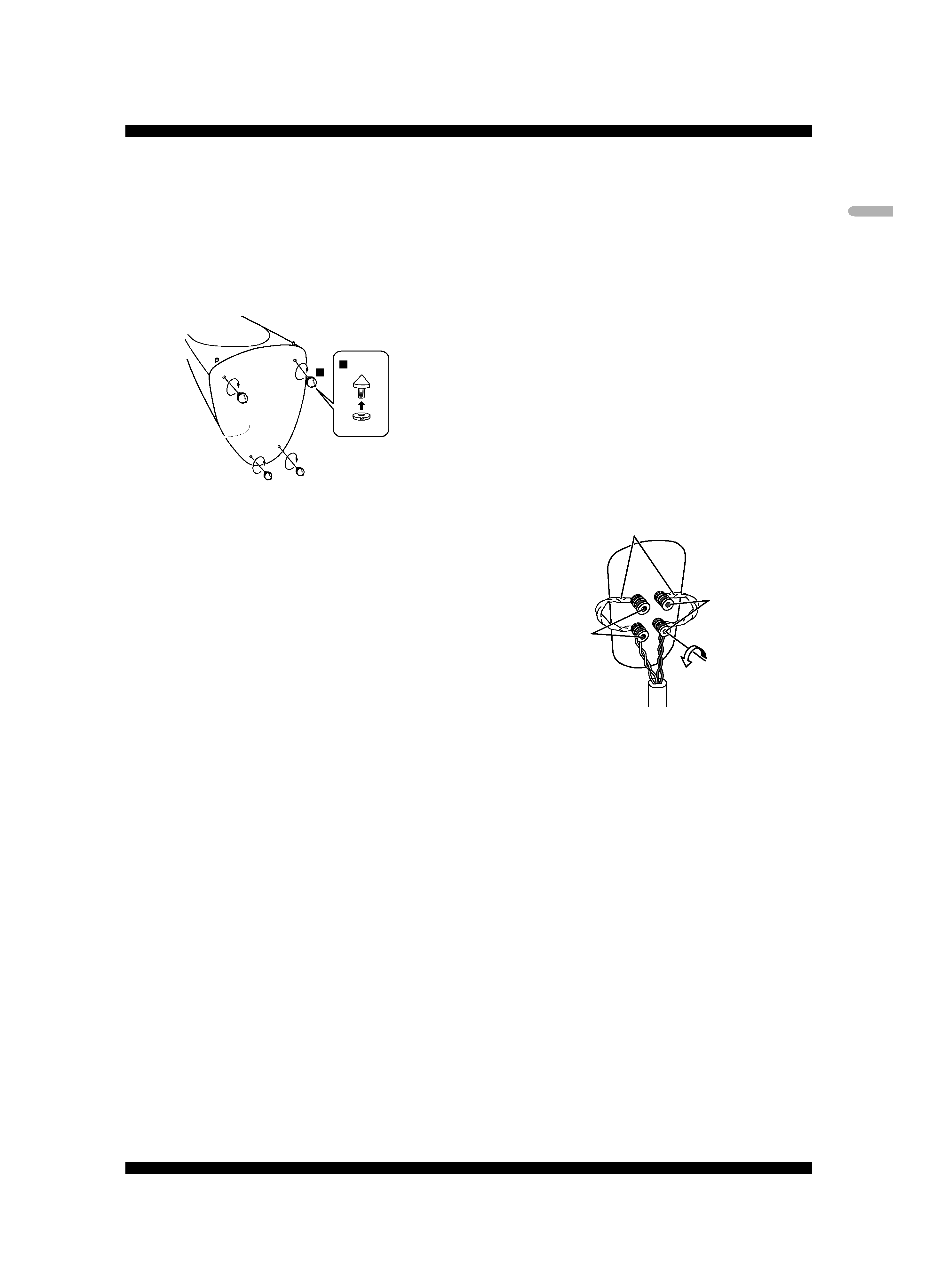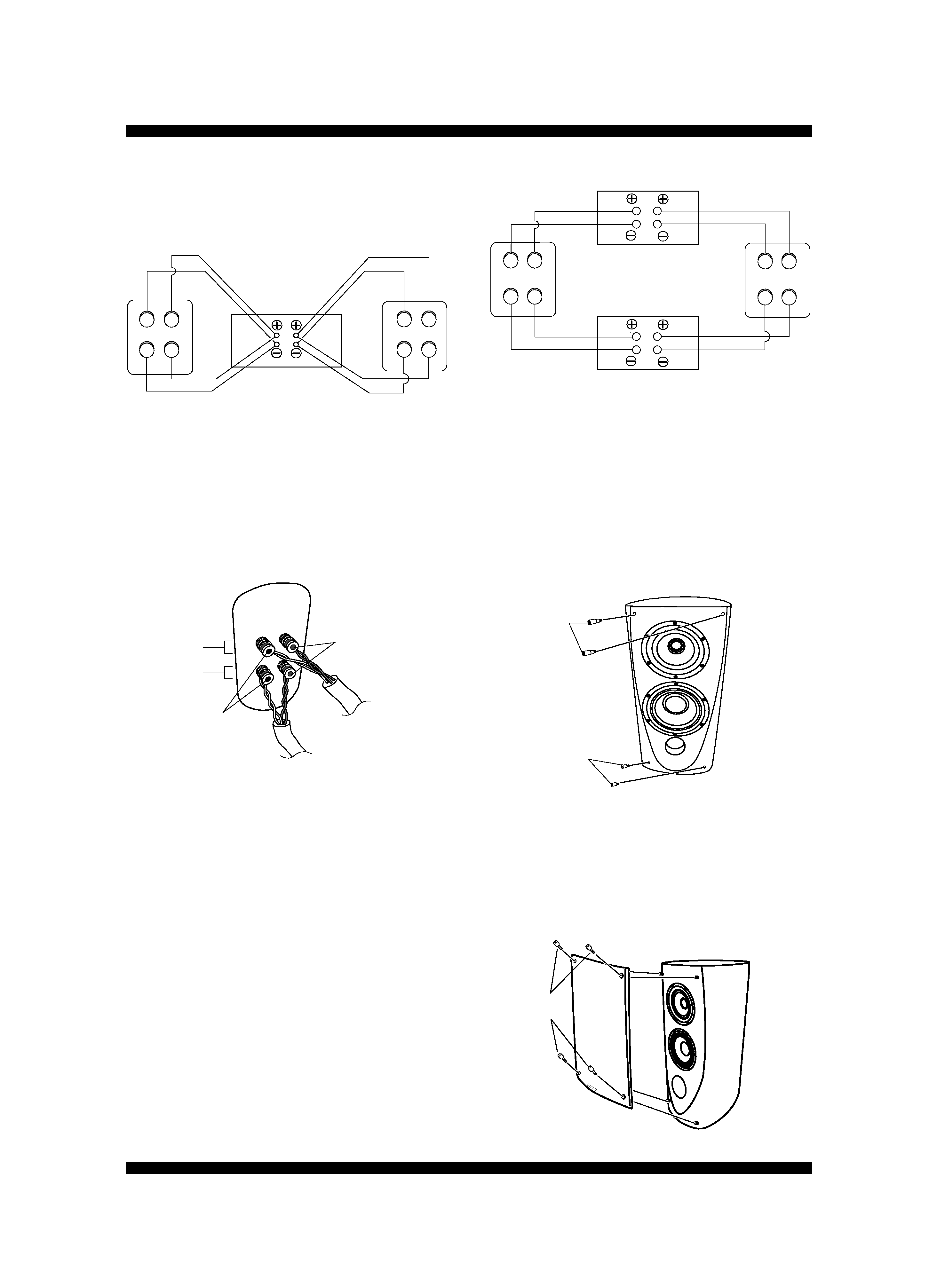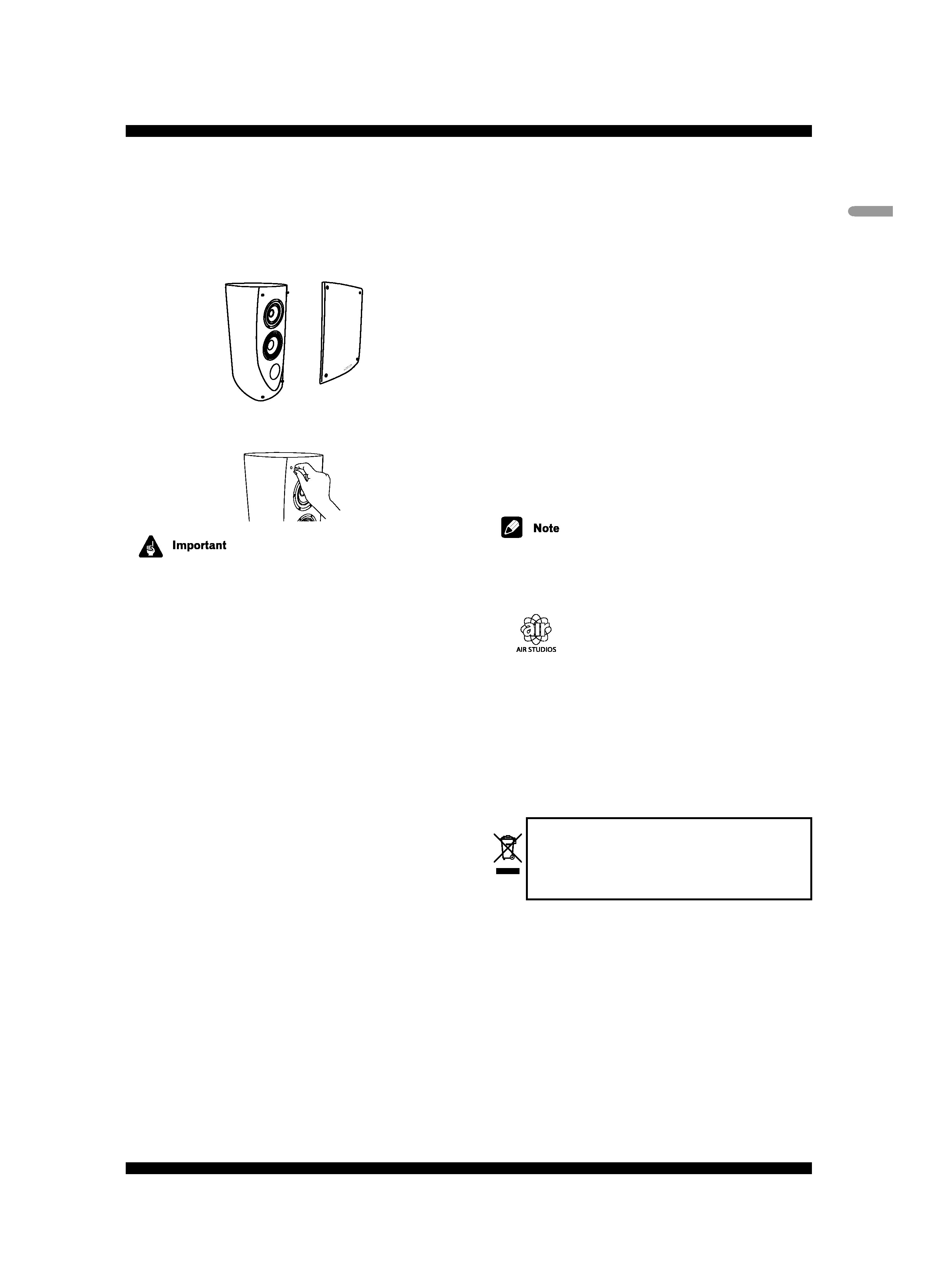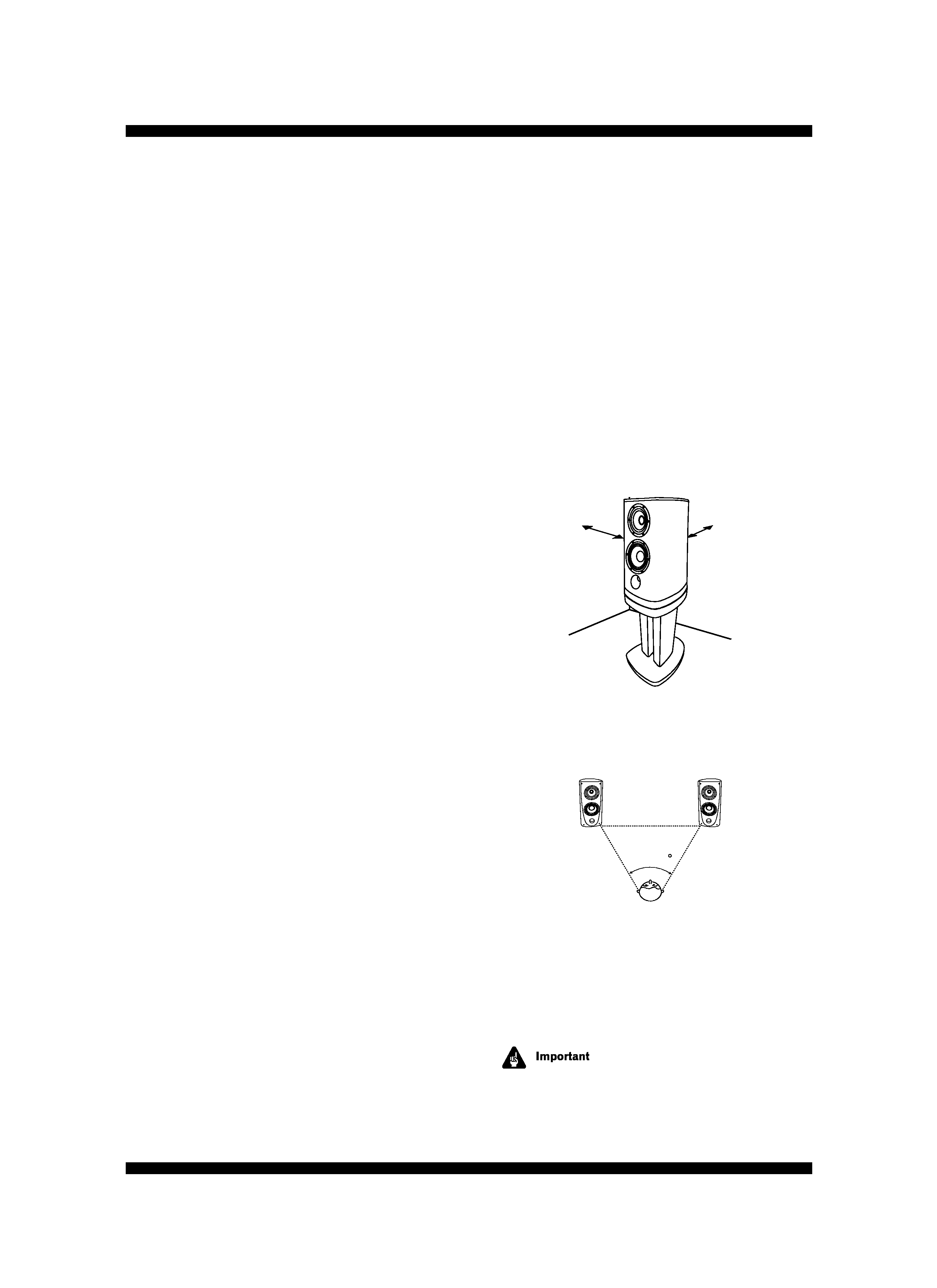
2
En
Thank you for buying this Pioneer product. Please read
through these operating instructions so you will know how to
operate your model properly. After you have finished reading
the instructions, put them away in a safe place for future
reference.
Features of this speaker system
· Construction follows leading-edge TAD technology
· Beryllium dual-concentric tweeter
· Aramid/carbon fiber reinforced composite 18cm woofer
· Perfect time design
Before you start
· The nominal impedance of this speaker system is 6
ohms. Connect the speaker system to an amplifier with
a load impedance ranging from 4 to 16 ohms (a model
with "4 16
" displayed on the speaker output
terminals).
· Do not touch the speaker cones as they are easily
damaged.
In order to prevent damage to the speaker system resulting
from input overload, please observe the following precau-
tions:
· Do not supply power to the speaker system in excess of
the maximum permissible input.
· When connecting or disconnecting anything in your AV
system, make sure the amplifier is switched off.
· When using a graphic equalizer to emphasize loud
sounds in the high-frequency range, do not use exces-
sive amplifier volume.
· Do not try to force a low-powered amplifier to produce
loud volumes of sound (the amplifier's harmonic
distortion will be increased, and you may damage the
tweeter).
Caution: installation
· Do not place the speaker on an unstable surface. It
could present a hazard if it falls, as well as damaging the
equipment. If placing the speaker on a thick carpet, we
recommend using the supplied speaker spikes for
stability.
· Switch off and unplug your AV equipment and consult
the instructions when connecting up components. Make
sure you use the correct connecting cables.
· Do not put a TV or other AV equipment on top of this
speaker. It could present a hazard if it falls, as well as
damaging the equipment.
Caution: in use
· Do not use the speaker to output distorted sound for
long periods of times. This can result in a fire hazard.
· Do not sit or stand on the speaker, or let children play on
the speaker.
· Do not put large or heavy objects on top of the speaker.
Installing your speaker
Please observe the following points when installing speakers:
· These speakers are bookshelf-type speakers which will
give their best performance when placed on a solid,
level surface off the floor. Placing the speakers directly
on the floor will result in boomy, undefined sound.
Ideally, the tweeters should be at about ear level when
seated in your listening position. We recommend using
the CP-2EX speaker stand for optimal sound and stability.
If you choose to use the CP-2EX speaker stand, make sure
you secure it with the screws provided.
· Sounds played through speaker systems are easily
affected in subtle ways by the conditions in the listening
space.
· For good sound, the speaker should be about 20cm
away from the back wall and at least 50cm away from
the side wall. If the room has a lot of reverberation, we
recommend hanging heavy fabric on the walls, and/or
putting a carpet on the floor to damp the sound. For best
results, cover walls completely.
50 cm
20 cm
· Place speakers equal distances from your listening
position for good stereo sound. Use speaker cords of the
same length for each speaker.
50 60
· If you are using a set of speakers for your TV sound,
install the speakers at equal distances either side of the
TV and point them in the same direction as the TV.
· Do not place the speaker where it will be in direct
sunlight, and avoid positioning it near heaters and air
conditioners. This may cause warping and discoloration
of the speaker cabinet and damage the speaker.
· Pioneer assumes no liability whatsoever for damages
resulting from assembly, improper mounting, insuffi-
cient reinforcement, misuse of the product, acts of
nature, etc.







